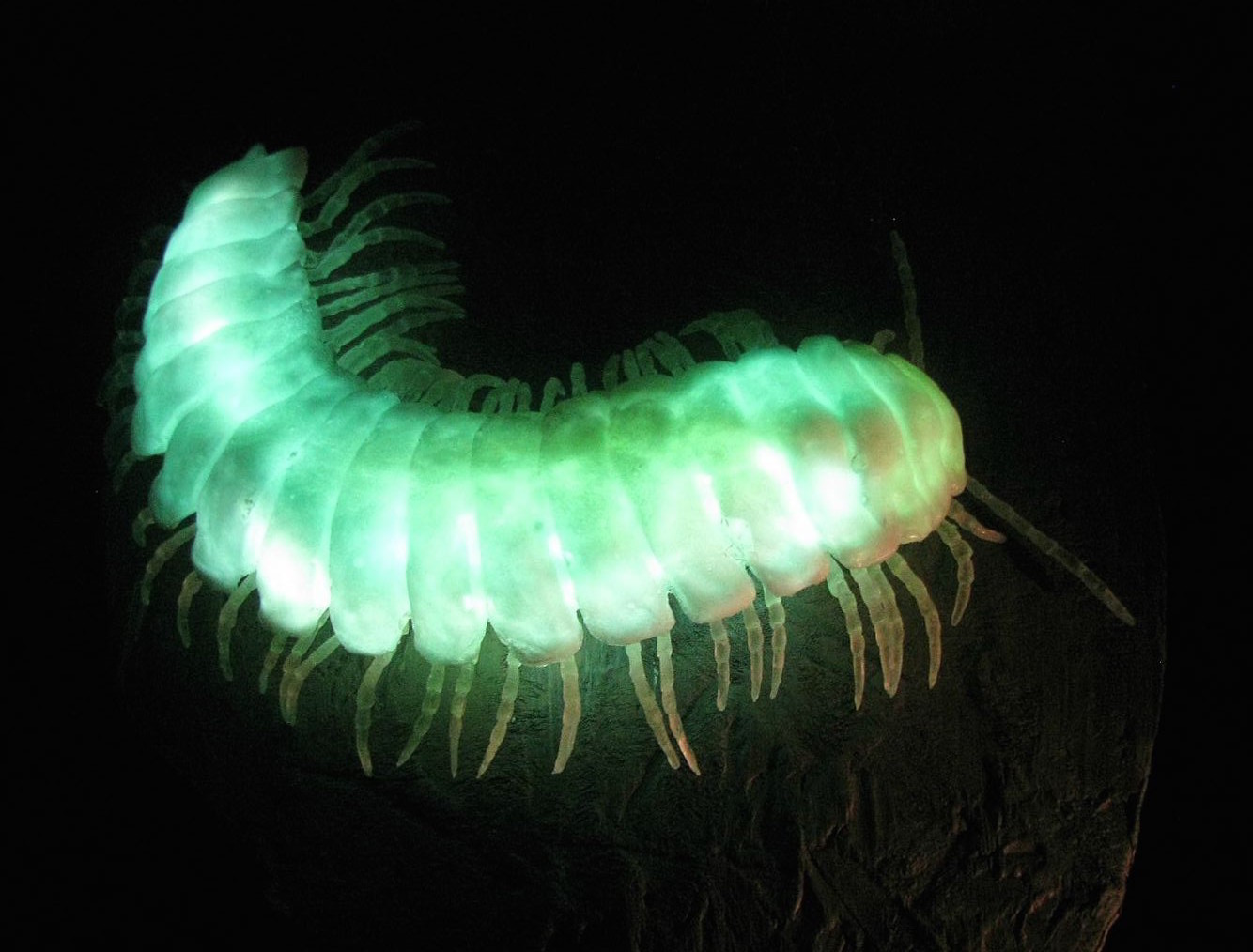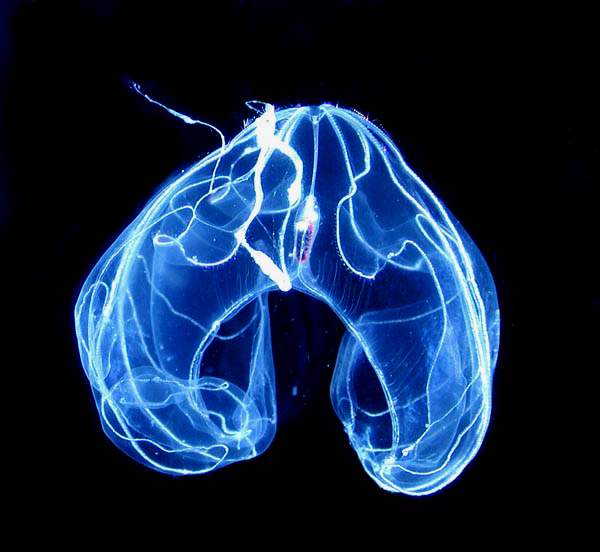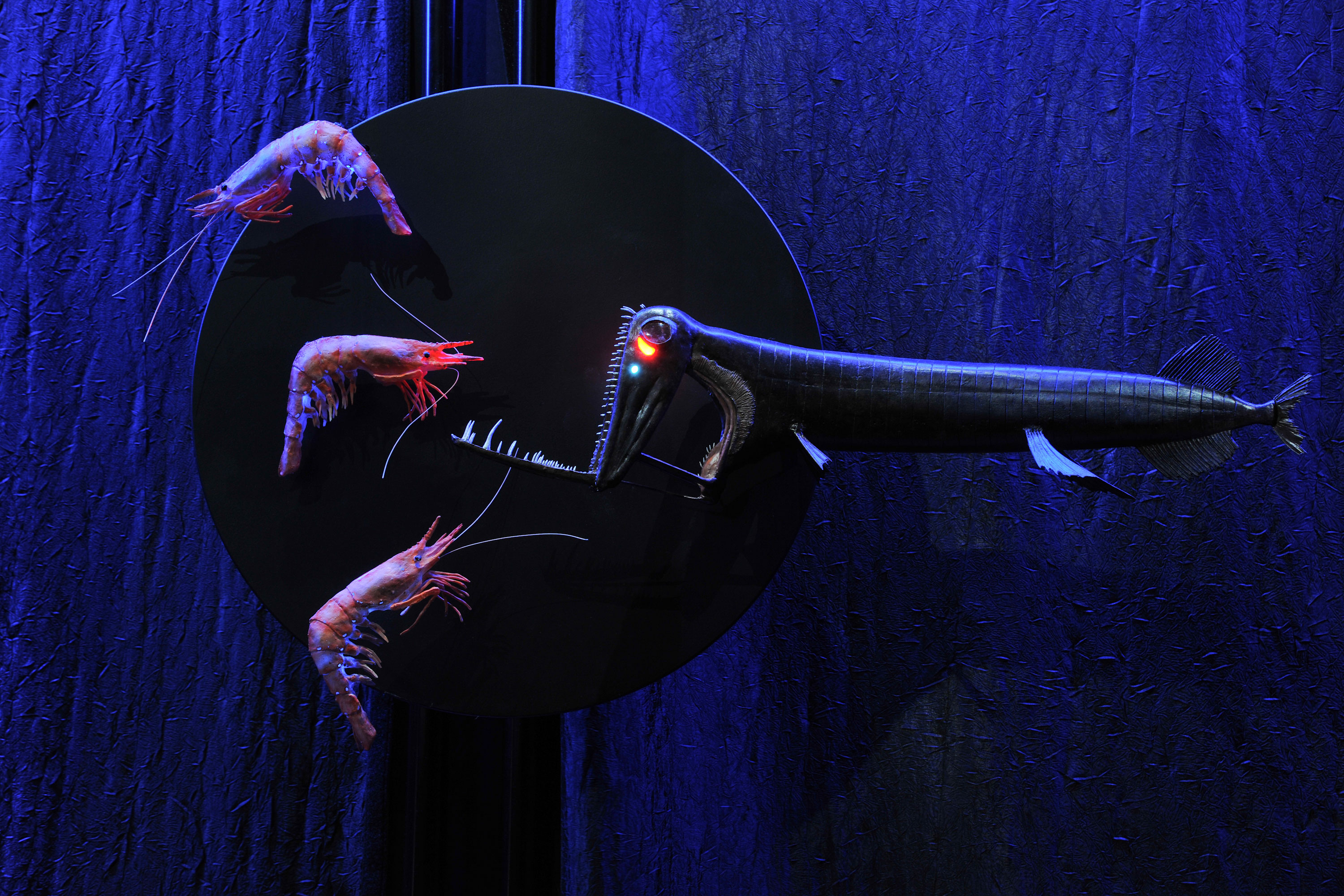Pretty little stars glimmering up in the night’s sky actually turn out to be ghoulish worms dangling from strands of mucus just above your head. What appears to glowing blue sphere shining out from the blackest reaches of the ocean floor in fact a ghastly fish with razor-sharp teeth. Here are bioluminescent creatures almost alien-like in their surreality, putting on otherworldly light shows to draw in prey or warn predators that they’re toxic.

Deep Sea Anglerfish
A small blue light emerges from the darkest depths of the deep sea, bobbing up and down slightly, drawing in curious little fish like moths to a flame. But once they get too close, they’re dinner, not noticing the rows of razor-sharp teeth just beyond the glow until it’s far too late. The bioluminescent deep sea anglerfish has a round, basketball-like body and a light-producing organ known as a photophore dangling from its elongated dorsal spine. It’s an ideal way for this incredibly ugly creature to lure in its prey. Though it may look fearsome in photos, it wouldn’t pose a threat to humans even if anyone managed to dive deep enough to see one, as it generally only reaches about five inches in length. However, that rounded body stretches to an alarming capacity, allowing it to swallow creatures up to twice its own size.
Glittering Glow Worms
What look at first like a star in the night sky reveals itself, upon closer examination, to be a worm dangling from the ceiling of a cave. Suddenly, In New Zealand’s Waitomo Caves, for example, thousands of them drip down in jewel-like strands over the heads of guests who float through the subterranean rock complex in boats. There are many species of gnats with larvae that glow in the dark, and these particular glowworms, Arachnocampa luminosa, spin nests of silk from the ceiling with as many as 70 hanging threads dotted with sticky mucus. The larvae glow to attract prey like mosquitos and moths into the snares.
Poisonous Glowing Millipedes
Not only do these creepy-crawlies glow a bright neon blue-green in the dark, they also produce cyanide, a powerful poison. As adults, Motyxia reach up to four centimetres in length, with twenty body segments, excluding the head. A variety found within California’s Sequoia National Park glows the brightest, emitting light from their exoskeleton continuously. This light acts as a warning signal to predators, and intensifies if the toxic millipedes are handled.
Glowing Cockroach
Roaches are already disturbing enough without adding glowing green eyes to the mix, but one benefit to these rare bioluminescent roaches is that you can always keep an eye on their location. Glowing cockroaches are only found in rainforests near an active volcano in Ecuador, and thirteen species have been identified in all. Those eye-like spots aim to warn potential predators that these bugs are toxic, but in reality, they’re faking it, mimicking the similar-looking bioluminescent and foul-tasting click beetle.
Translucent Comb Jelly
Comb jellies, or Ctenophora, are referred to as ‘aliens of the sea.’ It’s easy to see why in videos of these otherworldly creatures as they glide around in the water with their mouths open, the tiny hairs along their color bands glittering like strands of Christmas lights. Ranging in size from just a few millimetres to nearly five feet in length as adults, Ctenophora are invertebrate predators with transparent, jelly-like bodies divided into eight symmetrical parts. Their phosphorescent light can only be seen at night, and is brightest when they are disturbed.
